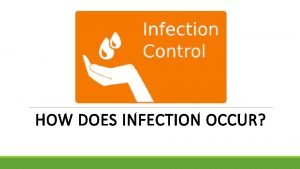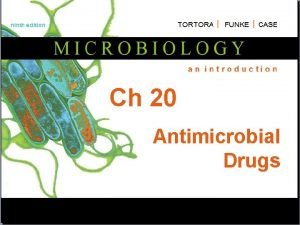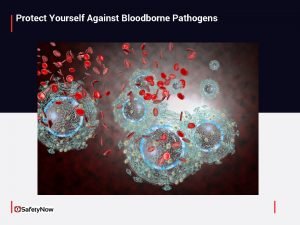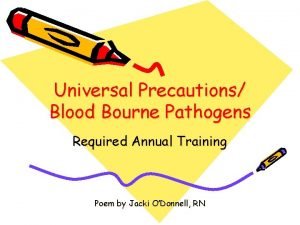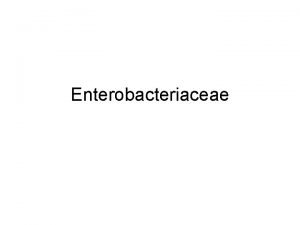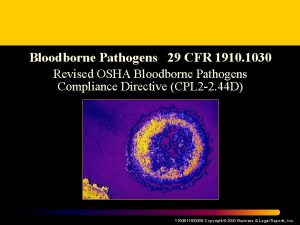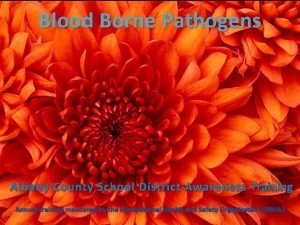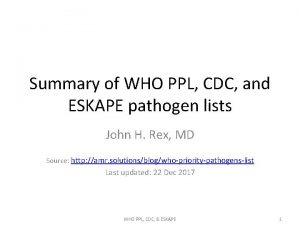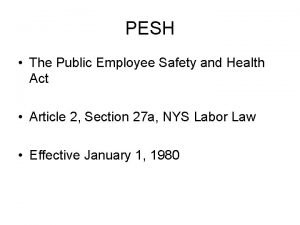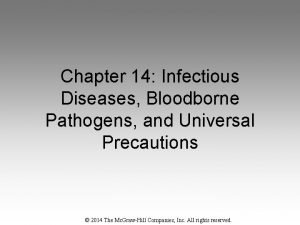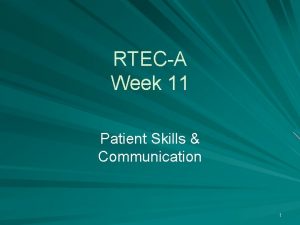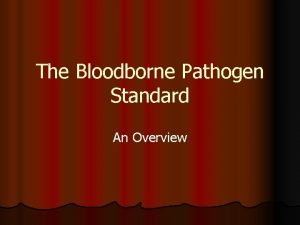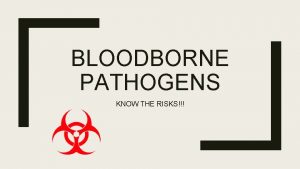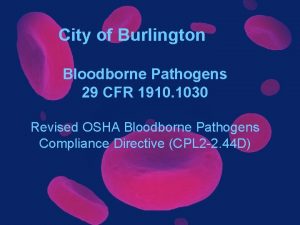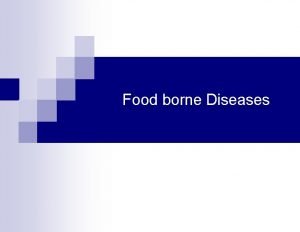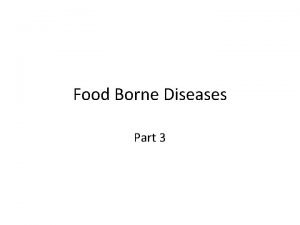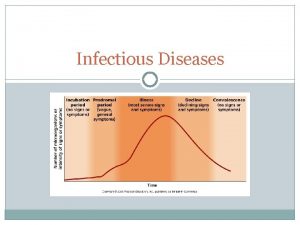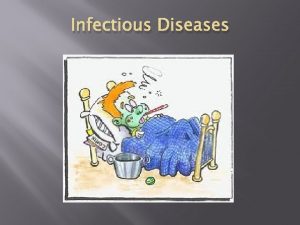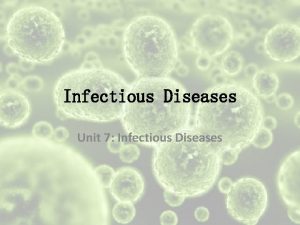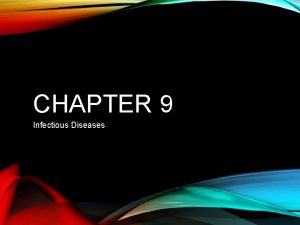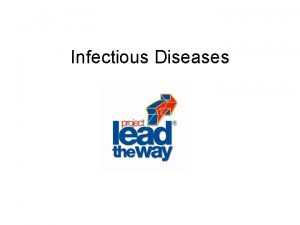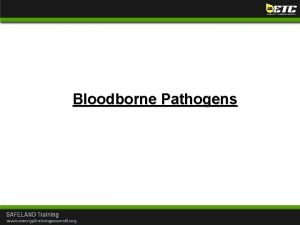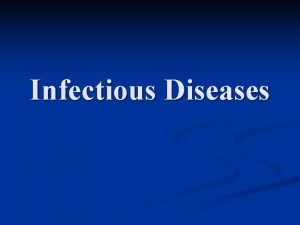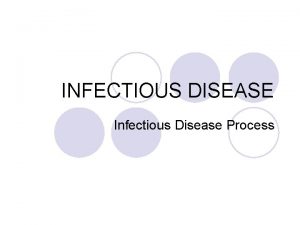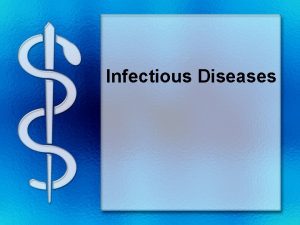Infectious Diseases Nature of infectious diseases Pathogens Infection



















- Slides: 19

Infectious Diseases

Nature of infectious diseases Pathogens Infection Disease In order to cause disease, pathogens must be able to enter, adhere, invade, colonize, and inflict damage Growth of pathogens or the production of toxins/enzymes cause disease

Microbes that cause infectious diseases Bacteria Viruses Fungi Protozoa Helminths Prions

Occurrence of infectious diseases Epidemiology –study of the occurrence of disease in populations Disease reservoirs-where the infectious agent survives (humans, rodents) Example = yersinia pestis (plague) Modes of transmission ingestion, inhalation, casual contact, intimate contact, bites/animals

History Emerging infectious diseases Have not occurred in humans before, Have occurred previously but affected only small numbers, Or have occurred throughout human history, but only recently recognized as disease due to infectious agent Re-emerging infectious diseases Once were major health problems globally or in a particular country, then declined dramatically, but are again becoming health problems for a significant proportion of the population.

The body’s defense mechanisms First Line of Defense Skin Secretions Non-specific defenses macrophages Normal Flora

The body’s defense mechanisms Immune System http: //www. learner. org/channel/co urses/biology/archive/animations /hires/a_hiv 1_h. html Humoral (antibody) response – B -cells B-cell, plasma cell, antibodies, memory B-cells Cell-mediated response – T-cells helper T-cells, killer T-cells, memory T-cells Vaccination produces immunity

Prevention Safewater Purification methods Testing against contamination Sewage Treatment Waste water plants separate components of sewage and treat them Chlorination Food Safety Inspections Pasteurization Regulations

Prevention Animal Control Domestic inspections Vaccinations Sanitation Vaccinations Pre-school Threshold proportion Herd immunity

Public Health Organizations NIH – supports health-related research CDC – investigates disease outbreaks, informs the public FDA – monitors safety of foods and medicines WHO – coordinates health/vaccine programs internationally

Treatment Bacteria (prokaryotes) Antibiotics “destroyer of life” Inhibit cell wall, protein, lipid, or RNA synthesis Penicillin was the first – interfers with cell wall Chloramphenicol, tetracycline – protein synthesis Rifampicin – prevents RNA from being made

Treatment Viruses Non-living; uses cell materials to replicate Highly toxic to host cells Target virus-specific enzymes involved in making DNA/RNA Acyclovir – herpes Amantadine – influenza AZT - AIDS

Treatment Fungi, protozoans, helminths Highly toxic because also eukaryotes Target reproduction, cell membrane, or other necessary functions Choroquinine - malaria

Resistance the ability of the pathogen to survive treatment by a particular drug Growing problem Mechanism change in genes that allows them to evade the action of the drug Stuctural changes in proteins, receptors Transfer of anti-microbial genes Don’t mutate but acquire it from others Transformation – taking up free-floating DNA plasmids Transduction – virus carries resistant gene to other bacteria Transposons – small “rogue” sections of DNA Mutations and genetic exchange is rare; but bacterial growth is high

Bioterrorism Violent acts or acts dangerous to human life that…appear to be intended: 1. 2. 3. To intimidate or coerce a civilian population; To influence the policy of a government by intimidation or coercion; or To affect the conduct of a government by assassination or kidnapping.

Bioterrorism Biological weapons used in bioterrorism are living microorganisms such as bacteria, viruses, fungi, that can kill or incapacitate. Health care facilities may be the initial site of recognition and response to bioterrorism activity. Because of this, the names and telephone numbers for internal and external departments or agencies that need to be contacted should be kept by each facility in its bioterrorism readiness plan.

Bioterrorism Response to bioterrorism agents: Internal reporting requirements (within a facility): Infection control personnel Epidemiologist (local and state) Administration (health care facility and health department) Office of public affairs in the health facility

Bioterrorism External contacts (outside of facility) Local health department State Health Department FBI CDC Local police EMS

Bioterrorism Agents Bacterial- Anthrax and Plague Viral- Small Pox Toxins- Botulism and Ricin
 Types of pathogens
Types of pathogens Icd 10 morbus hansen
Icd 10 morbus hansen Epidemiological triad of malaria
Epidemiological triad of malaria Beta-lactam-resistant pathogens
Beta-lactam-resistant pathogens How to protect yourself from bloodborne pathogens
How to protect yourself from bloodborne pathogens Blood bourne pathogens
Blood bourne pathogens Enterobacteriaceae
Enterobacteriaceae Bloodborne pathogens quiz answers
Bloodborne pathogens quiz answers Bloodborne pathogens awareness training
Bloodborne pathogens awareness training Bloodborne flora
Bloodborne flora Eskape pathogens cdc
Eskape pathogens cdc Exposure control plan bloodborne pathogens
Exposure control plan bloodborne pathogens Chapter 14 worksheet bloodborne pathogens
Chapter 14 worksheet bloodborne pathogens Blood borne pathogens
Blood borne pathogens Osha's bloodborne pathogens standard covers
Osha's bloodborne pathogens standard covers Bloodborne pathogens know the risk
Bloodborne pathogens know the risk All cuts should be
All cuts should be Bloodborne pathogens quiz answers
Bloodborne pathogens quiz answers Food borne pathogens
Food borne pathogens Food borne pathogens
Food borne pathogens
